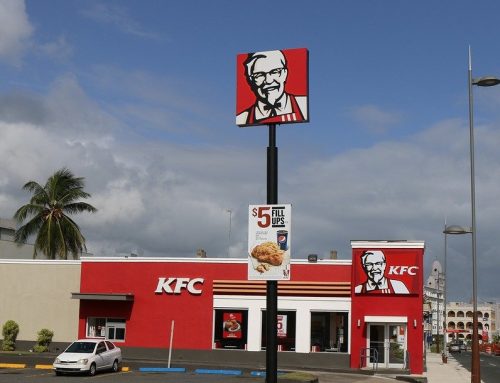Einsteigerguide: Die Grundlagen des Texture Mappings.
Die Texture Map ist eine zweidimensionale Bilddatei, die auf die Oberfläche eines 3D-Modells angewendet werden kann, um Farbe, Textur oder andere Oberflächendetails wie Glanz, Reflektivität oder Transparenz hinzuzufügen. Texture Maps werden so entwickelt, dass sie den UV-Koordinaten eines unverpackten 3D-Modells direkt ansprechen und entweder aus realen Fotos erstellt oder von Hand in einem Grafikprogramm wie Photoshop oder Corel Painter gemalt werden.
Texture Maps werden in der Regel direkt auf das UV-Layout des Modells gemalt, das als quadratisches Bitmap-Bild aus einem beliebigen 3D-Softwarepaket exportiert werden kann. Texturkünstler arbeiten in der Regel in Schichtdateien, wobei die UV-Koordinaten auf einer semitransparenten Schicht liegen, die der Künstler als Anhaltspunkt für das Platzieren bestimmter Details verwendet.
Color (or Diffuse) Maps.
Wie der Name schon vermuten lässt, dient der Einsatz einer Color Map, der Oberfläche eines Modells Farbe oder Textur hinzuzufügen. Dies kann so einfach sein, wie das Auftragen einer Holzmaserung auf eine Tischoberfläche oder so komplex wie eine Color Map für einen ganzen Spielcharakter (einschließlich Rüstung und Zubehör).
Texture Maps spielen in der Computergrafik jenseits von Farbe und Textur eine große Rolle. In einer Produktionseinstellung ist die Farben Map eines Charakters oder einer Umgebung in der Regel nur eine von drei Maps, die fast für jedes einzelne 3D-Modell verwendet werden.
Die anderen beiden wesentlichen Map-Typen sind specular, bump, displacement und normal maps.
Specular Maps.
Eine Specular Map (auch gloss maps genannt) legt der Software fest, welche Teile eines Modells glänzend sein sollen und welcher Glänzgrad umgesetzt werden soll. Sie werden benannt, weil glänzende Oberflächen wie Metalle, Keramik und einige Kunststoffe ein starkes Glanzlicht zeigen.
Wenn Sie sich nicht sicher sind, was Glanzlichter angeht, suchen Sie nach der weißen Reflexion auf dem Rand ihrer Kaffeetasse. Ein weiteres häufiges Beispiel für Spiegelreflexion ist der winzige weiße Schimmer im Augen eines Menschen, direkt über der Pupille.
Eine specular map ist typischerweise ein Graustufenbild und für nicht gleichmäßig glänzende Oberflächen absolut notwendig. Ein gepanzertes Fahrzeug zum Beispiel benötigt eine specular map, damit Kratzer, Dellen und Unvollkommenheiten in der Panzerung überzeugend auffallen.
Bump, Displacement oder Normal Map.
Bump Maps sind etwas komplexer als eines der beiden vorherigen Beispiele. Bump Maps sind eine Art Texture Map, die eine realistischere Darstellung von Unebenheiten oder Vertiefungen auf den Oberfläche eines Modells ermöglichen können.
Eine Mauerwand als Beispiel: Das Bild einer Mauer könnte auf eine flache Polygonebene abgebildet und als fertiggestellt bezeichnet werden, aber es sieht in einem finalen Rendering nicht gerade überzeugend aus. Denn eine ebene Fläche reagiert nicht so auf Licht, wie eine Mauerwand mit Rissen und ihrer Grobheit.
Um den Eindruck von Realismus zu verstärken, würde man eine Bump oder Normal Map hinzufügen, um die grobe, körnige Oberfläche von Ziegelsteinen genauer nachzubilden und die Illusion zu verstärken, dass die Risse zwischen den Ziegelsteinen tatsächlich im Raum zurückgehen.
Natürlich wäre es möglich, den gleichen Effekt zu erzielen, indem man jeden einzelnen Stein von Hand modelliert, aber eine normal gemappte Ebene ist rechnerisch viel effizienter. Die Bedeutung von Normal Maps in der Spieleindustrie ist hoch, da Spiele ohne normal Maps nie so aussehen würden, wie es in der Realität heute der Fall ist.
Bump, Displacemet und Normal Map verdienen eine Diskussion für sich und sind für die Erstellung von fotorealistischen Renderings unabdingbar.
Andere wichtige Map-Typen.
Neben den bereits vorgestellten Map-Typen existieren noch einige weitere, die Sie recht häufig antreffen werden.
Die Reflection Map legt der Software fest, welche Teile des 3D-Modells reflektiert werden sollen. Falls die gesamte Oberfläche eines Modells reflektierend oder die Reflexionsebene gleichmäßig ist, wird der Einsatz überflüssig. Reflection Maps sind Graustufenbilder, wobei Schwarz 0% Reflektionsgrad und Weiß eine 100% reflektierende Oberfläche anzeigen.
Die Transparency Map hingegen legt der Software fest, welche Teile des Modells transparent sein sollen. Eine gebräuchliche Verwendung für eine Transparency Map ist eine Fläche, die sonst sehr schwierig oder rechnerisch zu teuer wäre, wie z.B. ein Kettengliederzaun. Anstatt Links einzeln zu modellieren, kann eine Transparenz durchaus überzeugend sein, solange das Modell nicht zu nah am Vordergrund steht und deutlich weniger Polygone verwendet.
Damit haben Sie nun die verschiedenen Map-Typen zur Bearbeitung von Oberflächen in 3D-Modellen kennengelernt. In folgenden Blogbeiträgen werden wir diese Thematik noch ein wenig tiefer behandeln.


